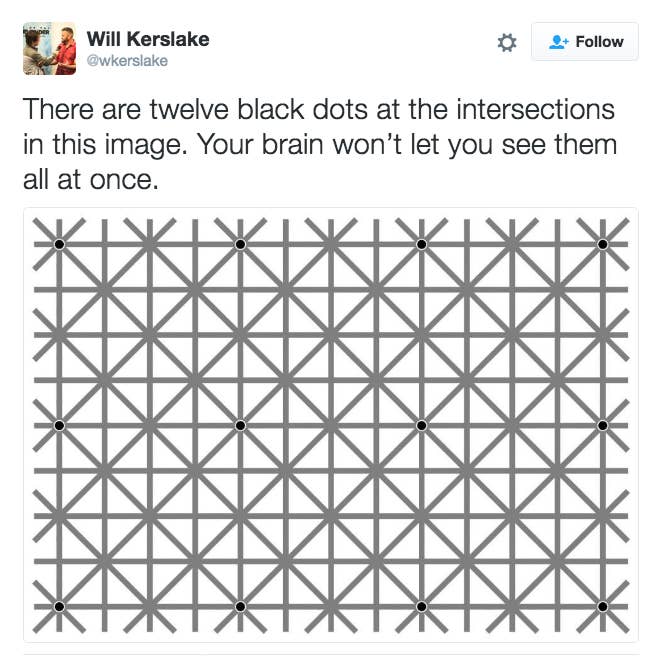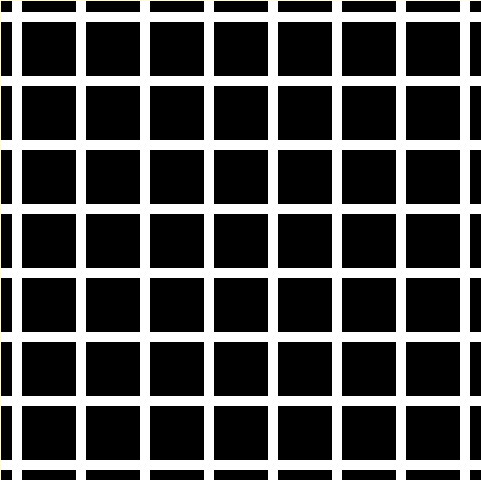This tweet has been retweeted over 13,000 times.

People are really freaking.
@wkerslake @debreuil mouth literally hanging open. wtf, brain???
WHAT WITCHCRAFT IS THIS https://t.co/tdy16lwfaG
So.

Well, the image was originally posted to Facebook by the Japanese psychology professor Akiyoshi Kitaoka, who took it from an academic paper published in Perception by Jacques Ninio and Kent A Stevens, in which they looked at variations of the Hermann grid.
Here is the Hermann grid: Dark patches appear where the lines cross, except when you're looking directly at an intersection.

The traditional explanation for the black dots you see is that they're caused by how your brain processes contrasts in brightness (although that explanation has been challenged by other scientists).
The new version, published in 2000, uses this same principle – except in this case, there are black dots at some of the intersections.
The scientists explain what you are probably seeing in their paper:
On shifting the eyes then holding fixation, all but a very few disks, generally in the vicinity of the point of gaze, disappear; elsewhere, the alleys appear uniform in brightness, as though they had been completed by a filling-in process. Different clusters of disks pop into visibility as the eyes fixate across the pattern, and within seconds only a few remain other than the given disk under fixation.
Like the Hermann grid, this illusion relies on your peripheral vision to fill in gaps incorrectly. Your brain can only focus on what's at the centre of your field of vision, so it has to extrapolate from the information it does have to guess what's going on in the rest of the picture. As you can tell when looking at the picture, it doesn't quite get it right. The scientists offer various explanations for this – including the levels of spatial resolution and contrast that can be detected by your eyes.
So, now you know.

